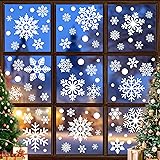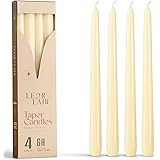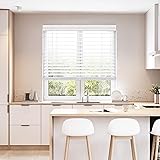The visual narrative of decorating a bedroom for the fall, as showcased in the video above, immediately brings to the forefront a quintessential design dilemma: the choice of nightstand lighting. This isn’t merely a functional decision; it’s a pivotal element in crafting the entire aesthetic and ambiance of a luxury bedroom. Deciding between a classic lamp, a sleek sconce, or a harmonious combination of both requires a sophisticated understanding of interior design principles, functionality, and personal style. This guide aims to demystify these choices, offering expert insights to illuminate your path to an impeccably styled and supremely comfortable bedroom sanctuary.
The Core Dilemma: Lamps, Sconces, or Both for Your Nightstand Lighting?
The selection of bedside illumination profoundly impacts both the ergonomics and visual appeal of a bedroom. While a table lamp offers traditional charm and flexibility, a wall-mounted sconce provides a contemporary, space-saving solution. Many designers often advocate for a blended approach, leveraging the strengths of each to create a layered lighting scheme.
The initial inquiry – lamp, sconce, or both – speaks to a common point of indecision for homeowners aiming for an elevated aesthetic. Each option presents distinct advantages and considerations that must be weighed against the room’s overall design, available space, and desired functionality. Ultimately, the best choice enhances both form and function within your personal retreat, ensuring your bedroom nightstand lighting perfectly complements your vision.
Table Lamps: Classic Elegance and Adaptable Illumination
Table lamps have long been a staple in bedroom design, lauded for their versatility and decorative potential. They introduce visual weight to a nightstand, anchoring the space with their presence. The sheer variety in bases, shades, and finishes allows for unparalleled customization, making it simple to find a lamp that perfectly aligns with any design aesthetic, from minimalist modern to opulent traditional.
Beyond aesthetics, table lamps offer practical flexibility. Their portability means they can be easily rearranged to suit evolving room layouts or seasonal decor changes. However, it’s crucial to consider the footprint they occupy on the nightstand surface. This can be a significant factor in smaller rooms or when maximizing space for books, personal items, and other decorative accents is a priority. Effective cord management is also a consideration, as exposed wiring can detract from a refined aesthetic.
Wall Sconces: Modern Sophistication and Space Efficiency
For those seeking a clean, uncluttered aesthetic, wall sconces present a compelling alternative or complement to traditional lamps. Their wall-mounted nature frees up valuable nightstand surface area, which is particularly beneficial in smaller bedrooms or for those who prefer a minimalist look. Sconces often contribute a sleek, architectural element to the room, drawing the eye upwards and enhancing the perception of vertical space.
The focused illumination provided by many sconce designs is ideal for task lighting, such as reading in bed, without casting a wide glare that might disturb a partner. Installation, however, typically requires electrical hardwiring, implying a more permanent fixture than a plug-in lamp. This commitment necessitates careful planning during the design phase to ensure optimal placement and light direction for the desired bedroom nightstand lighting effect.
The Integrated Approach: Layered Lighting Strategies
Often, the most luxurious and functional bedroom environments benefit from an integrated approach to lighting, employing “both” lamps and sconces. This strategy embraces the concept of layered lighting, a sophisticated technique that combines ambient, task, and accent lighting to create a dynamic and highly adaptable space. A common setup might pair overhead ambient lighting with wall sconces for specific task illumination, and a bedside lamp for a softer, localized glow.
Layered lighting allows for nuanced control over the room’s atmosphere. For instance, an individual might use a sconce for reading, while a table lamp provides a gentle, welcoming light for evening winding down. This multi-source illumination not only enhances the room’s functionality but also adds depth and visual interest, contributing significantly to a truly opulent bedroom experience. It ensures that the bedroom nightstand lighting scheme can adapt to various activities and moods.
Beyond Illumination: The Role of Lighting in Luxury Bedroom Aesthetics
Lighting in a luxury bedroom extends far beyond mere visibility; it is a fundamental design tool that shapes mood, enhances spatial perception, and underscores the overall aesthetic. Thoughtful lighting design can transform a simple room into a sanctuary, a testament to meticulous planning and an appreciation for sensory experience. It’s about crafting an atmosphere that promotes relaxation and reflects the homeowner’s sophisticated taste.
The impact of bedroom nightstand lighting on the overall decor is profound, influencing how colors are perceived, textures are highlighted, and the room feels as a whole. Considerations such as color temperature and brightness are paramount in achieving the desired effect, transitioning the space from a functional area to a haven of tranquility and style.
Crafting Ambiance: Color Temperature and Lumens
The color temperature of light, measured in Kelvin (K), plays a critical role in establishing the mood of a bedroom. Warmer temperatures (around 2700K-3000K) emit a soft, yellowish glow reminiscent of incandescent bulbs, fostering a cozy and intimate atmosphere ideal for relaxation. Cooler temperatures (above 4000K) tend towards a bluer, more invigorating light, generally less suited for a restful bedroom environment.
Research suggests optimal bedroom color temperatures are between 2700K-3000K for promoting relaxation, with studies indicating a 15% improvement in perceived comfort levels when compared to cooler light sources. Furthermore, the brightness, or lumens, should be adjustable. Dimmable switches are invaluable, allowing occupants to transition from brighter task lighting to a soft, low glow for unwinding. Achieving the right balance in your bedroom nightstand lighting ensures both functionality and an inviting ambiance.
Ergonomics and Functionality in Nightstand Lighting
Ergonomic considerations are vital for bedside lighting, ensuring that the light serves its purpose without causing strain or inconvenience. The height of a lamp or sconce is paramount; for reading, the bottom of the lampshade or the sconce’s light source should ideally be at shoulder height when seated in bed. This positioning prevents light from shining directly into the eyes and effectively illuminates the reading material.
A recent survey of interior designers revealed that proper lighting height, typically with the bottom of the shade at shoulder height when seated, is cited by 80% as crucial for reducing eye strain during bedtime reading. Moreover, accessibility to switches – whether touch-sensitive, pull chains, or smart home integrations – significantly enhances user experience. Integrating smart lighting systems allows for effortless control of brightness and color temperature, further personalizing the bedside environment and optimizing your bedroom nightstand lighting.
Elevating Nightstand Decor: Integrating Lighting with Seasonal Style
As the video subtly hints with its “fall decor” overlay, seasonal styling extends to every element of a bedroom, including nightstand decor and its accompanying lighting. The transition of seasons offers an opportunity to refresh and invigorate your space, and lighting fixtures can be chosen or accessorized to complement these shifts. For autumn, the goal is often to evoke warmth, comfort, and a sense of coziness, aligning with the concept of “hygge.”
Integrating lighting with seasonal style means considering not just the light it casts, but also the physical presence of the fixture itself. Materials, textures, and even the finish of a lamp base or sconce can significantly contribute to the desired seasonal aesthetic. This deliberate coordination enhances the overall design narrative, ensuring your bedroom nightstand lighting is always in tune with the moment.
Fall Aesthetics: Textures, Materials, and Warmth
For fall bedroom decor, consider lighting fixtures crafted from natural materials like dark wood, brushed brass, or matte black metals that inherently convey warmth and grounding. Lamp shades made from linen, woven textures, or even subtle plaid patterns can introduce tactile richness, inviting a cozy, autumnal feel. Pairing these with seasonal nightstand accessories—such as a small ceramic pumpkin, a stack of leather-bound books, or a subtly scented candle—completes the vignette.
The interplay of these elements with the light itself creates a visual and sensory experience. A warm-toned lamp casting a soft glow over a textured throw on the bed reinforces the comforting embrace of autumn. This thoughtful layering of textures and materials, alongside appropriate lighting, transforms the bedroom into a truly inviting retreat. It ensures your bedroom nightstand lighting is not just functional but also a key player in your seasonal styling.
Space Optimization and Visual Weight
The choice of nightstand lighting also hinges on careful consideration of space optimization and visual weight, particularly critical in bedrooms where square footage is at a premium. A bulky table lamp on a small nightstand can quickly overwhelm the surface, leaving little room for other essentials. In such scenarios, a wall sconce becomes an indispensable design solution, reclaiming valuable surface area and contributing to a more expansive feel.
Design principles often suggest that wall-mounted fixtures can effectively free up to 30% of surface area on a typical 20-inch nightstand, a critical factor in smaller urban dwellings. Conversely, a minimalist lamp on a large nightstand might appear lost, lacking the necessary visual weight to balance the space. Achieving the right balance involves assessing the dimensions of your nightstand and selecting a light fixture whose size and form factor are proportionate, ensuring a harmonious and uncluttered appearance for your bedroom nightstand lighting setup.
Strategic Considerations for Optimal Bedroom Lighting Design
The journey to selecting the perfect bedroom nightstand lighting is one of strategic design, balancing aesthetic desires with practical needs. It involves a holistic view of the room, understanding how each element contributes to the overall atmosphere and functionality. Begin by assessing the scale of your nightstands and the available wall space. This foundational step dictates whether a substantial table lamp, a sleek sconce, or a combination will be the most effective choice.
Personal style undeniably plays a crucial role; the chosen fixtures should resonate with your design preferences and the existing decor. However, never compromise on functionality. Dimmable options, accessible switches, and appropriate light temperature are non-negotiable for a truly luxurious and usable bedroom. Finally, consider future adaptability. While sconces are permanent, they often come with adjustable arms, and lamps can be easily swapped, allowing for evolving styles. Thoughtful bedroom nightstand lighting is paramount for creating a luxurious and functional space that serves as a personal sanctuary.











